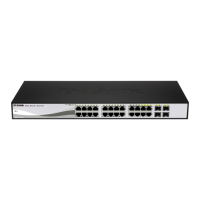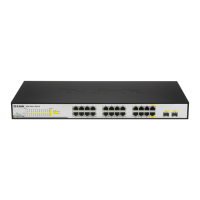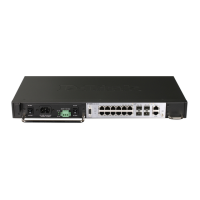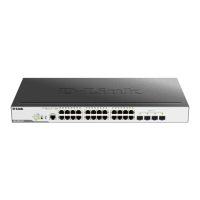4 Web-based Switch Configuration D-Link Smart Managed Switch User Manual
58
Figure 4.67 – L2 Functions > Link Aggregation > LACP Port Settings
From Port: The beginning of a consecutive group of ports may be configured starting with the selected port.
To Port: The ending of a consecutive group of ports may be configured starting with the selected port.
Activity: There are two different roles of LACP ports:
Active - Active LACP ports are capable of processing and sending LACP control frames. This allows LACP
compliant devices to negotiate the aggregated link so the group may be changed dynamically as needs
require. In order to utilize the ability to change an aggregated port group, that is, to add or subtract ports from
the group, at least one of the participating devices must designate LACP ports as active. Both devices must
support LACP.
Passive - LACP ports that are designated as passive cannot initially send LACP control frames. In order to
allow the linked port group to negotiate adjustments and make changes dynamically, one end of the
connection must have "active" LACP ports.
Timeout: Specifies the administrative LACP timeout. The possible field values are:
Short (3 Sec) - Defines the LACP timeout as 3 seconds.
Long (90 Sec) - Defines the LACP timeout as 90 seconds. This is the default value.
Click the Apply button to implement changes made.
L2 Functions > Multicast > Auto IGMP
Auto IGMP is the feature that offers a Two-Steps configuration for IGMP snooping related parameters on
specified VLAN group. The parameters include IGMP snooping state, IGMP snooping querier state, Fast
leave state and IGMP snooping filter mode.
The settings of Auto IGMP.
Figure 4.68 – L2 Functions > Multicast > Auto IGMP

